
1. ANSI / ASME B16.5 – Class 150 (RF Type)
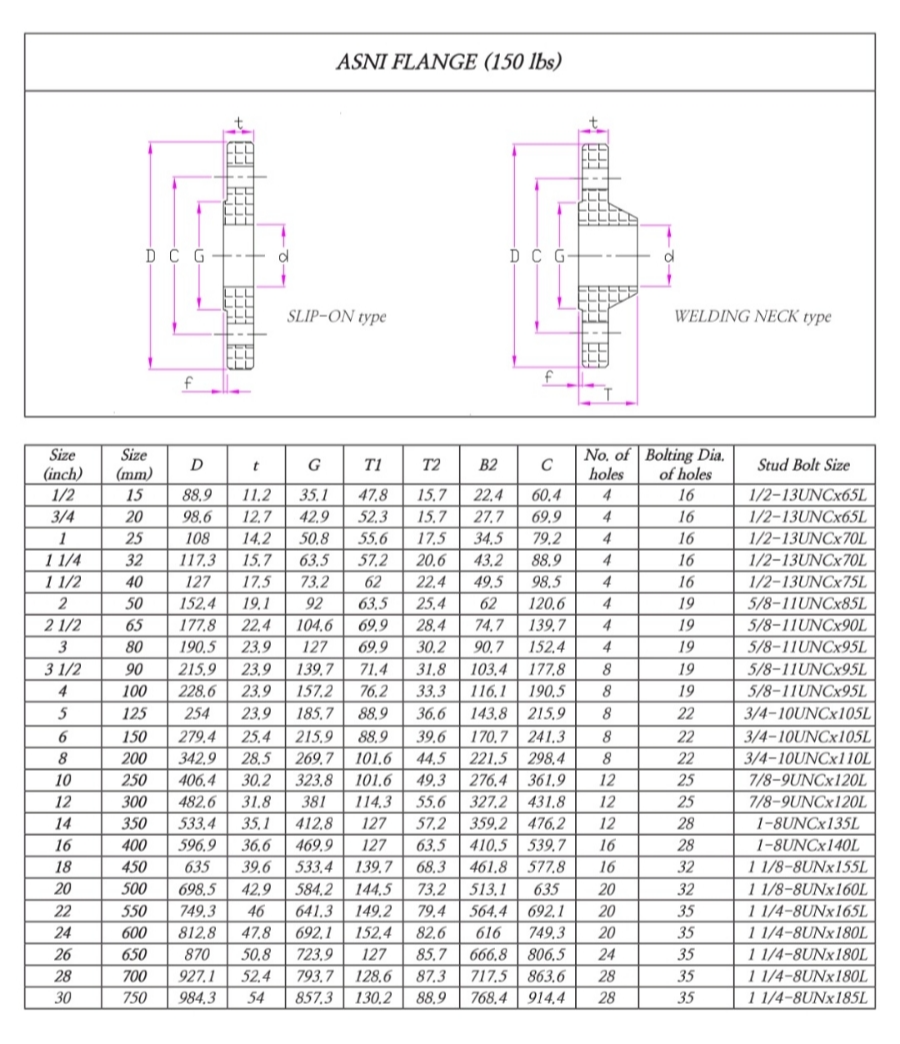
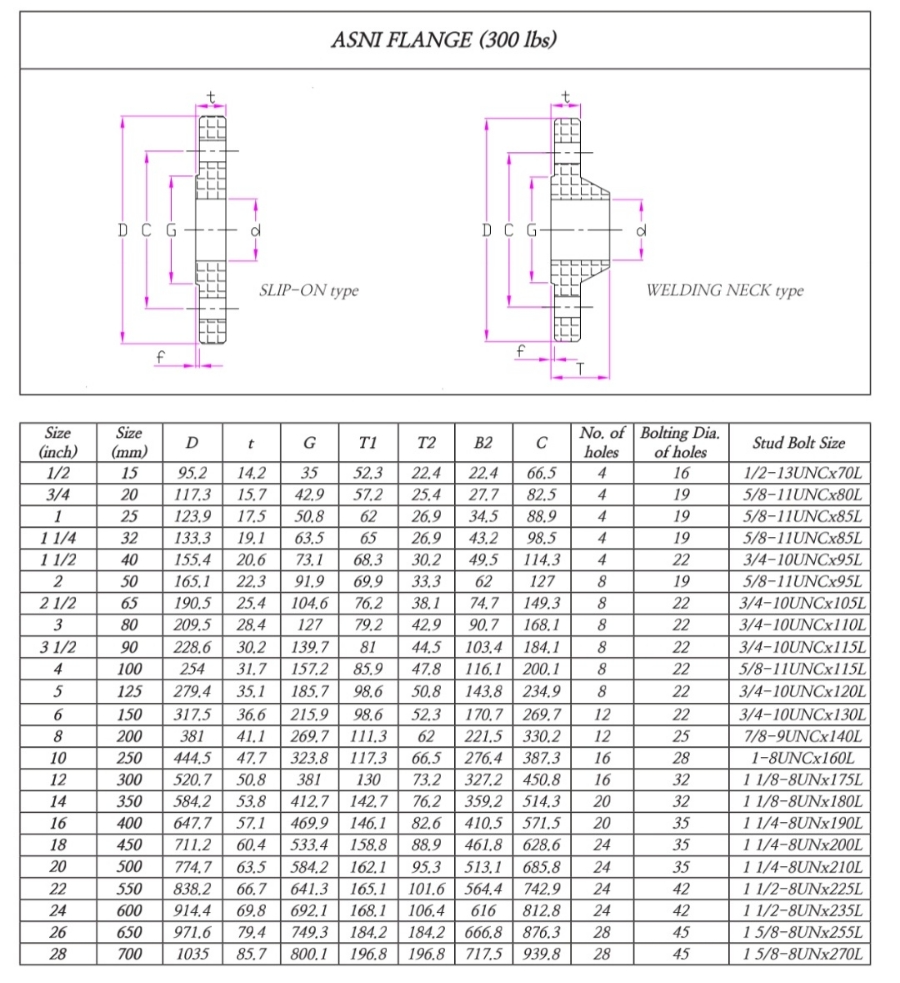


(Reference: ASME B16.5-2020)
2. JIS B2220 – 10K Flange Dimensions

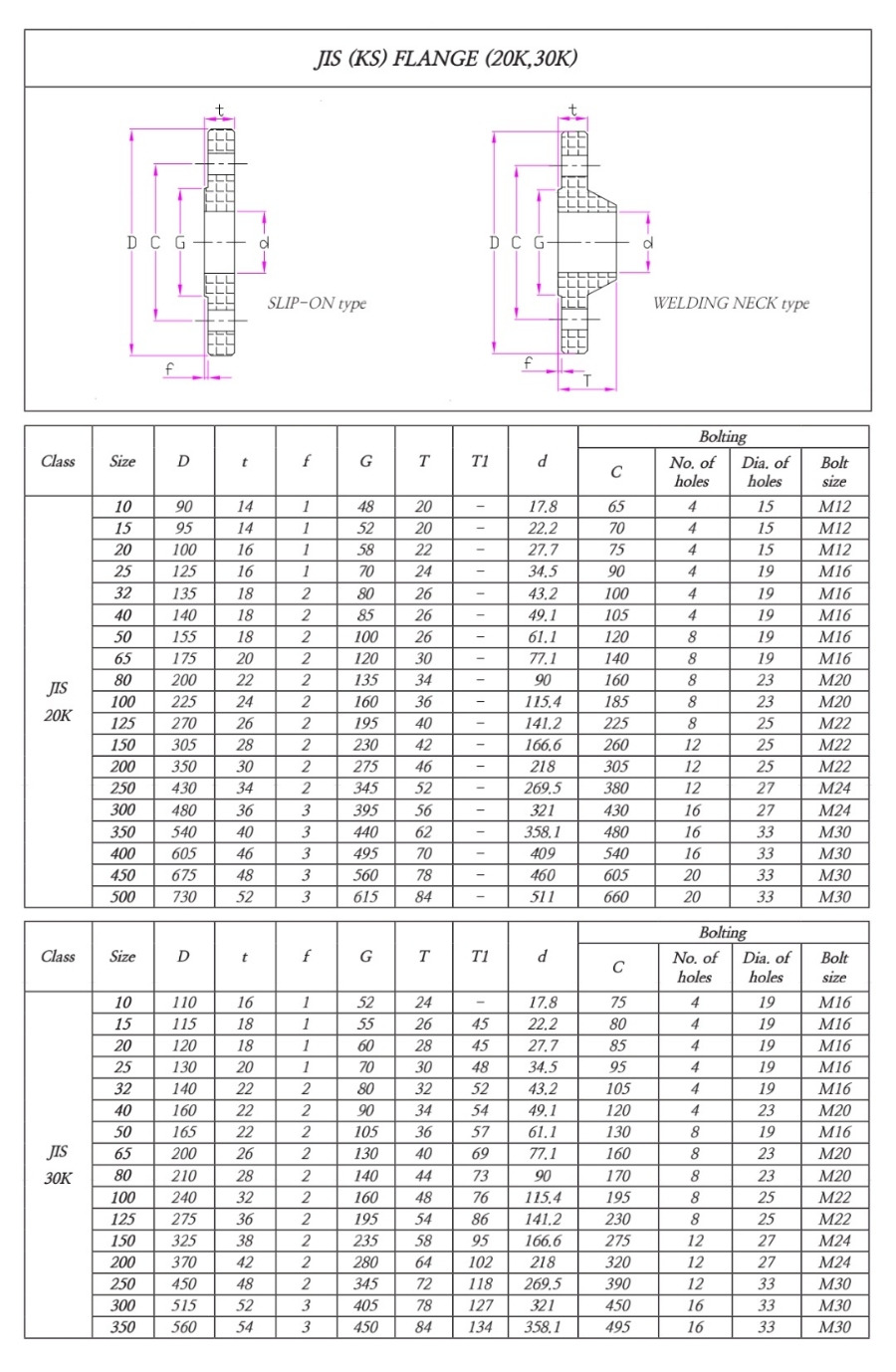
(Reference: JIS B2220-2019)
3. DIN EN 1092-1 – PN16 Flange Dimensions

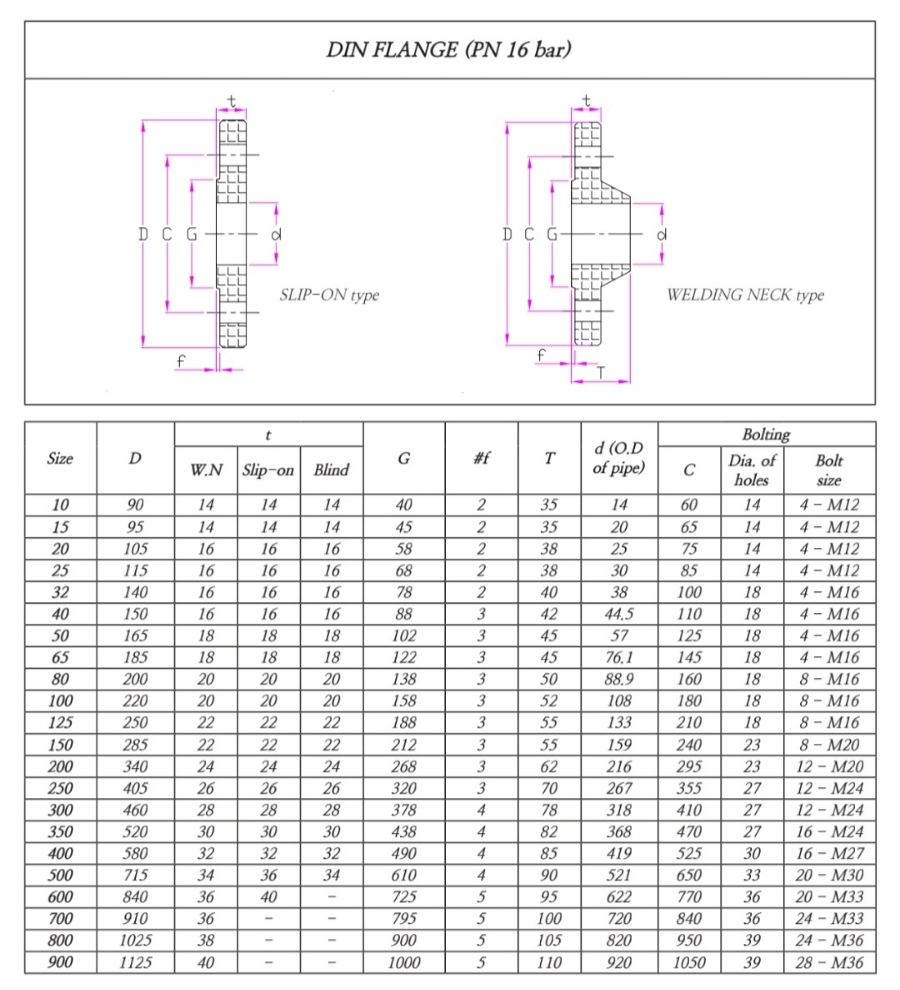
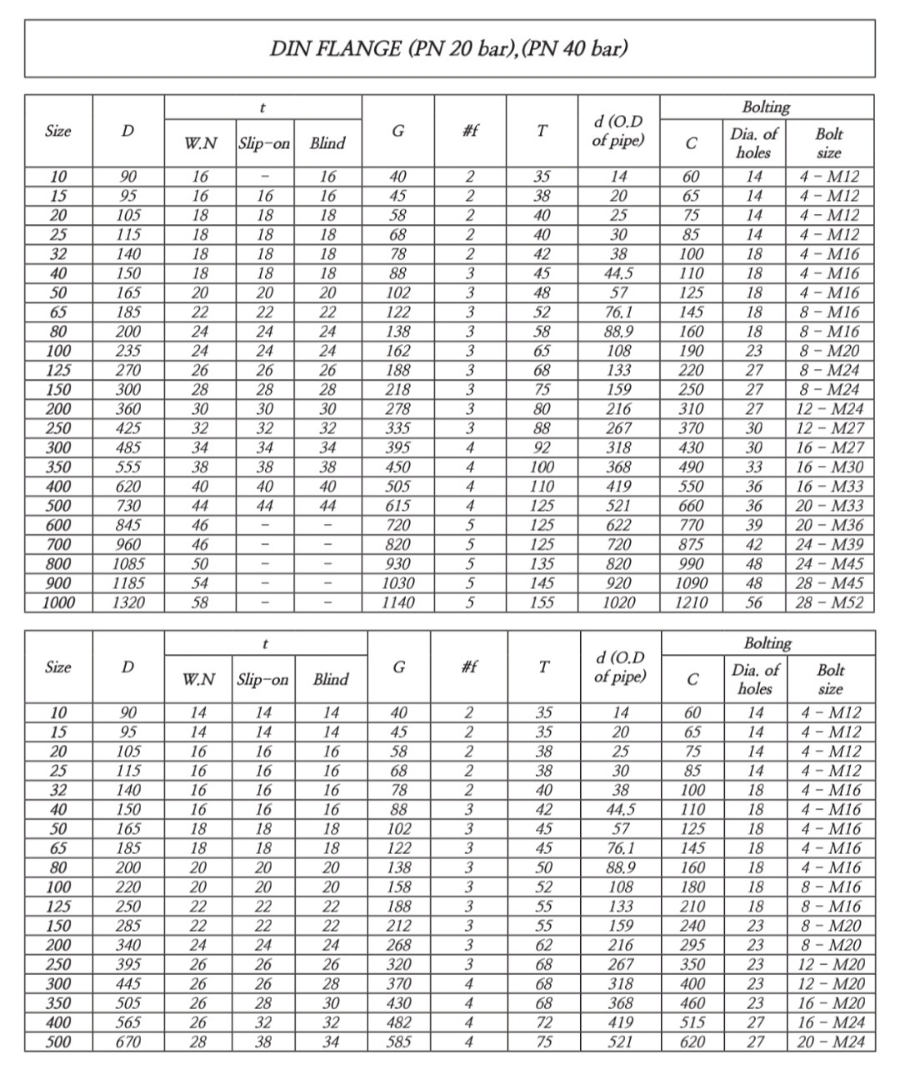
7. Size Conversion (ASME / JIS / DIN)
| ASME (inch) | JIS (A) | DIN (DN) | Typical Pressure |
| 1/2" | 15A | DN15 | 150# / 10K / PN16 |
| 1" | 25A | DN25 | 150# / 10K / PN16 |
| 2" | 50A | DN50 | 150# / 10K / PN16 |
| 3" | 80A | DN80 | 150# / 10K / PN16 |
| 4" | 100A | DN100 | 150# / 10K / PN16 |
| 6" | 150A | DN150 | 150# / 10K / PN16 |
| 8" | 200A | DN200 | 150# / 10K / PN16 |
| 10" | 250A | DN250 | 150# / 10K / PN16 |
| 12" | 300A | DN300 | 150# / 10K / PN16 |
| 16" | 400A | DN400 | 150# / 10K / PN16 |
| 20" | 500A | DN500 | 150# / 10K / PN16 |
| 24" | 600A | DN600 | 150# / 10K / PN16 |
8. Field Notes
- JIS 10K and ASME 150# may look similar, but their bolt circles differ — they are not interchangeable.
- DIN PN16 flanges are closer to JIS 10K, yet bolt pitch and count can still vary.
- Always verify OD, PCD, and bolt diameter before ordering or fabricating.
Conclusion
Flanges are simple — until you mix standards.
A 2 mm difference in bolt pitch can cause an entire spool to fail alignment.
Always confirm the standard, pressure class, and facing type before fabrication or installation.
Flange Types and Their Applications – Weld Neck, Slip-On, Blind, Socket Weld, Threaded, Lap Joint
Flanges may look simple, but each type has a specific role in how a piping system handles pressure, temperature, and vibration. Using the wrong flange type can lead to leaks, misalignment, or even catastrophic failure.This guide explains the most common fl
www.nowdaylab.com
How Industrial Filters Work: Cartridge vs. Bag Type Explained
IntroductionIndustrial filtration is one of the most overlooked yet critical processes in manufacturing. Whether you are dealing with chemicals, semiconductor ultrapure water, or food processing, filtration determines the purity, efficiency, and lifespan o
www.nowdaylab.com
Pressure Vessel Testing & Inspection – What Really Happens on Site
Here’s the truth:You can have the best drawings, the cleanest welds, and still end up with a ticking bomb if your testing is sloppy.Pressure vessel testing isn’t paperwork. It’s the part where you find out if what’s on paper actually holds pressure
www.nowdaylab.com


